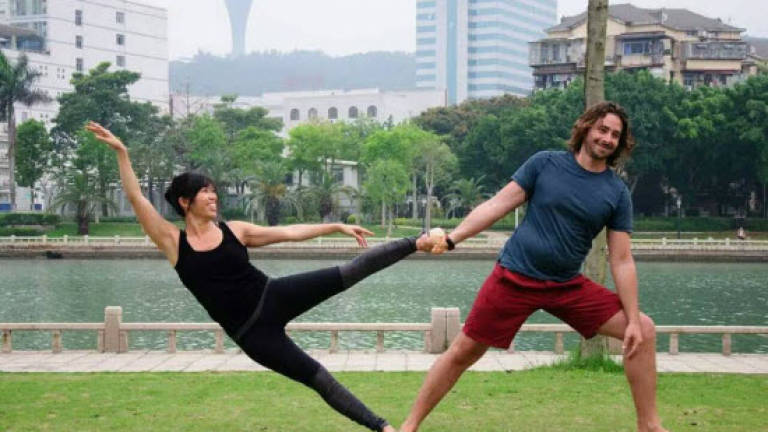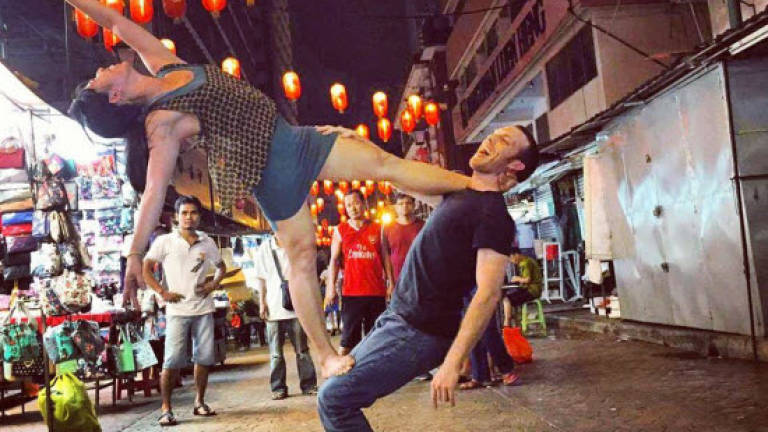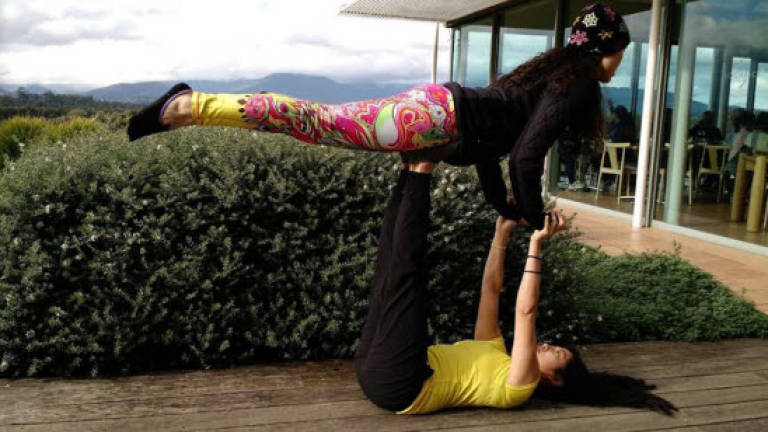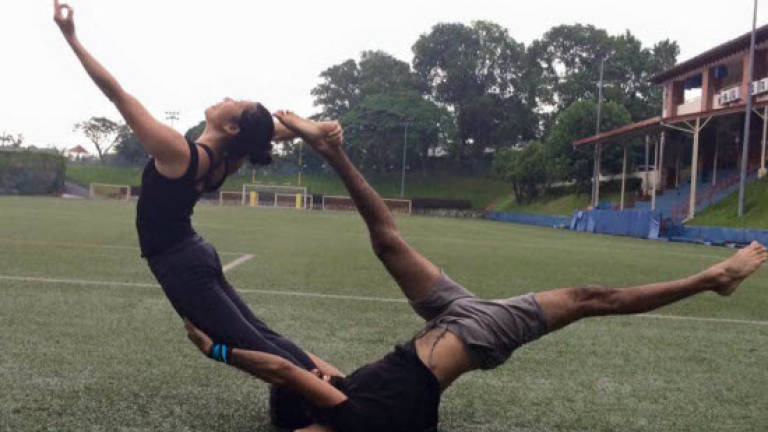Yoga in acrobatic motion




ACROYOGA is a form of exercise where acrobatics meets yoga. And at the forefront of this growing local community of practitioners is Sasa Chian, who teaches AcroYoga at a studio in Bandar Kinrara, Puchong.
Chian first picked up this form of yoga in 2009. She explains: “I have been dancing since I was five. It started with ballet, modern and then jazz. I became a professional contemporary dancer when I was 18.
“Every day, we would be doing contemporary dance, [and] we would be doing yoga. A lot of conditioning work.”
As a dancer, she knew she needed an edge to help her with her performances. “In ballet, we train our legs to be strong but not our upper body.’
In order to merge the two, she learned AcroYoga, after being introduced to it during a workshop.
“Coming into acrobatics and yoga, we do a lot of push-ups, and suddenly I had a boost in my upper body and lower body [strength].”
She adds that she was also attracted to the “musicality in the practice. There is this sense of listening that is precious to me: listening to my body, my partner’s body, and creating the movement and the flow together”.
She began to seek out AcroYoga communities, both here and overseas, and trained under two renowned schools – the AcroYoga Montreal and the AcroYoga Inc in San Francisco.
The AcroYoga Montreal was founded by Jessie Goldberg and Eugene Poku in 1999. The two combine acrobatics, yoga and dance in their version of it.
The AcroYoga Inc, which was founded in 2006 by Jason Nemer and Jenny Klein, features a combination of acrobatics, yoga and healing arts in their version.
“But I’m certified by the Montreal school,” says Chian.
Since becoming an instructor herself, Chian has taught the exercise to a whole new group of practitioners, and even conducts AcroYoga performances along with some of her fellow practitioners and students.
“Because it [involves partners], I have to look for someone who has performance and creative skills and can contribute to the choreography we are trying to present. I have different partners for that.”
There are several key positions in AcroYoga. At the bottom is the base, or the person who does the lifting. The person who is lifted off the ground is called a flier and has to have a strong sense of balance and core muscles (lower back, hips, glutes and stomach).
“I have lifted a guy who was 91kg. In a static position, it is easier. If there is a lot of movement, then I have to use someone of the same weight [as me] or lighter.
“We do a lot of conditioning work [for] the bones and the back. We do something called bone stacking, [since] bone is stronger than the muscle.
“If I am lying on the ground and my shoulder is on the ground, I just have to ensure my arms are in the 90° position. Then my bones are static and my flier will ‘stack’ her bones against mine. So we are actually [grounded].”
In AcroYoga, she adds that the partners have to contribute equally to the exercise and have to move in sync, with both partners supporting each other, which promotes camaraderie.
Chian says that participants need to sign a waiver form. If they experience sudden pain, discomfort or physical injury, they have to take responsibility themselves.
However, there is always a ‘spotter’ who watches and helps ensure the movements are correct.
Chian adds that obstacles to the exercise can be physical or psychological. “For beginners there is a lot of conditioning. We do push-ups, sit-ups and handstands.
“You work with your own body weight and then slowly you start working with the other person’s body weight. There is a lot of listening involved in AcroYoga.”